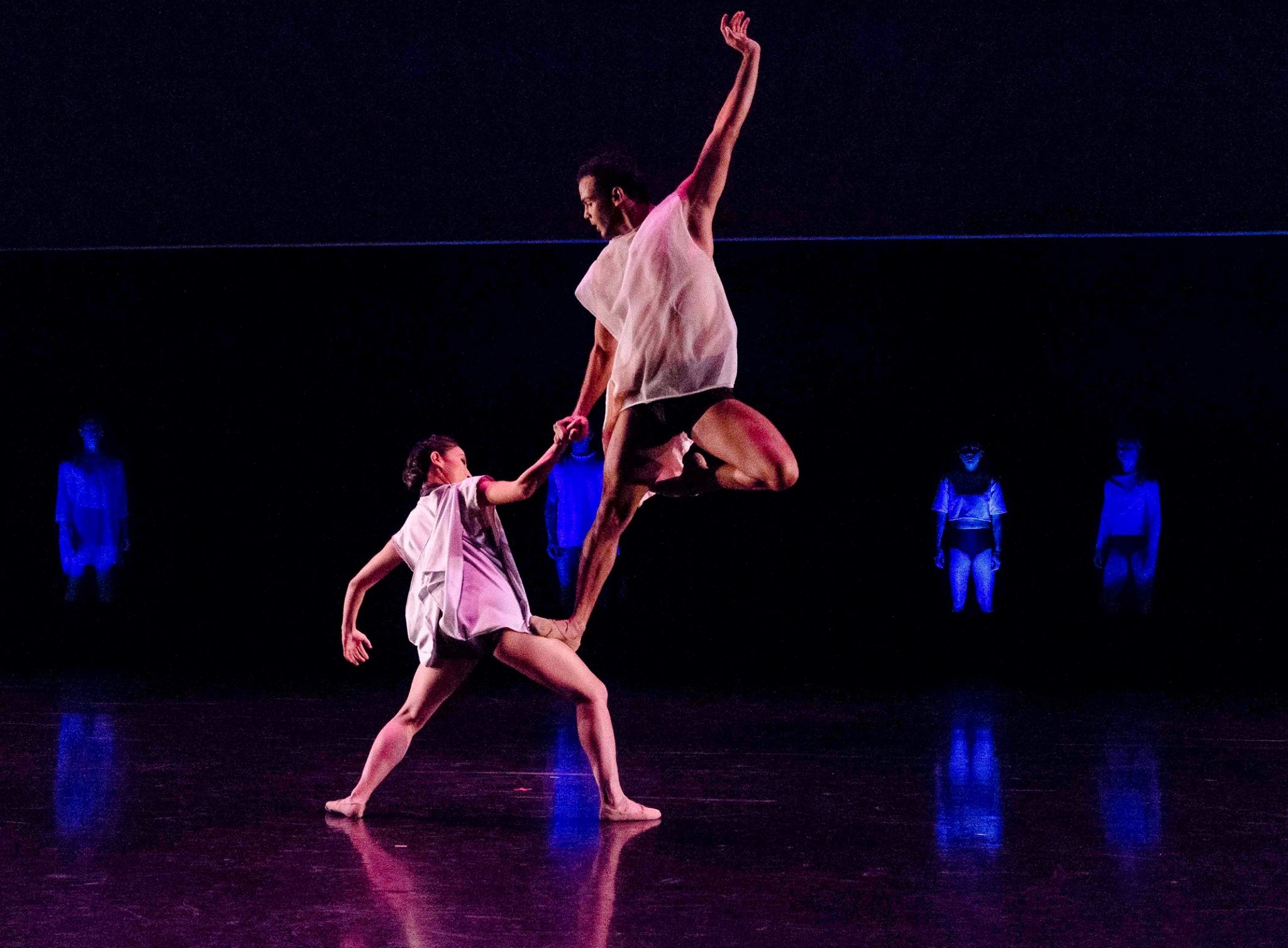There is no art form more embodied by or tethered to the human form than dance, and classical ballet historically capitalizes on romantic ideals of gender binaries. George Balanchine, arguably the most influential 20th Century choreographer of ballet, famously declared, “Ballet is woman.” Woman as femme, woman on the excruciating yet ethereal pedestal of the pointe shoe, and woman as lifted and held by man. As dance critic Alistair Macaulay points out, Balanchine’s “kind of ballet was always a man’s view of woman, and a solely heterosexual one.”
But Grand Rapids Ballet is challenging these notions in Movemedia: Diversity I, a compelling program of new commissioned work with the theme of diversity from three promising choreographers.
It’s the perfect cultural moment to raise questions about what it means to be defined by our gender and to actively challenge those definitions, and what a relief it is to see it played out on stage, beautifully, and without incendiary conflict. For that is the upshot of these three meticulously crafted and executed dances — that there is liberation in fluidity and we need not fear the breakdown of stereotype and norms.
To achieve this extraordinarily provocative feat, the women come out of their pointe shoes and tutus, the men partner each other, the women lift up each other as well as the men, and the chiseled androgynous bodies move freely beyond the false binary of masculine and feminine. The choreography largely resonates as Modern, the natural home for pushing the boundaries of classical dance; however, it is rooted in the lexicon of ballet with its upliftment, turnout, extensions, and exquisite technical skill.
The 90-minute show with a 20-minute intermission begins with Norbert De La Cruz III’s “The Return of Balance,” the most sweeping of the three dances with fourteen dancers dressed in black and lit warmly by Matthew Taylor. The men make swirls and circles while the women employ edgy, angular port de bras. The gender play is progressive with beautiful lifts and weight sharing, pas de deux between women and pas de trois among men with all of them gliding in socked feet. The dance asks us to consider not only how we define gender roles in all kinds of relationships, but also how we interpret bodies.
Jennifer Archibald’s deeply sensual “Vapor” with skin-baring earth-tone costumes by Jessica Gilbertson builds on the theme of physical negotiation and touch as the 10 dancers fluidly press up against each other and offer spellbinding acrobatic balances alone and with each other set to vaguely Celtic music. Their articulation through the spine is serpentine and piscine at once and the overall effect of the partnering and solos is elegant, lovely and shot through with palpable human connectivity and responsiveness.
The finale, “They/Them,” choreographed by Loughlan Prior with unique unisex tunic-like costumes in varying shades of grey from William Fitzgerald, brings the erasure of gender to completion. Its eight dancers, lit overhead in rectangular spotlights, run in place, get trapped in each other’s costumes, fall into each other, and lift each other onto their shoulders before stepping across a literal and figurative threshold upstage in this wonderfully expressive, technically complex, and gorgeous dance.
Preceding each of the three dances is a short film capturing the dancers in rehearsal and the choreographer’s intent in their own words. Though it’s a bit like peeking behind the curtain before the show even begins, Grand Rapids Ballet’s impulse to teach and give the audience insight into process is admirable.
Ultimately, the promise of this exploration in dance that moves us into worlds and ways beyond gender is beautiful, hopeful and wonderfully timely. With Movemedia: Diversity I, Grand Rapids Ballet shows itself yet again to be an innovative, relevant, enormously talented and adaptable company that is shaping dance as we know it.
Movemedia: Diversity I
Grand Rapids Ballet
Feb. 9-11
grballet.com





